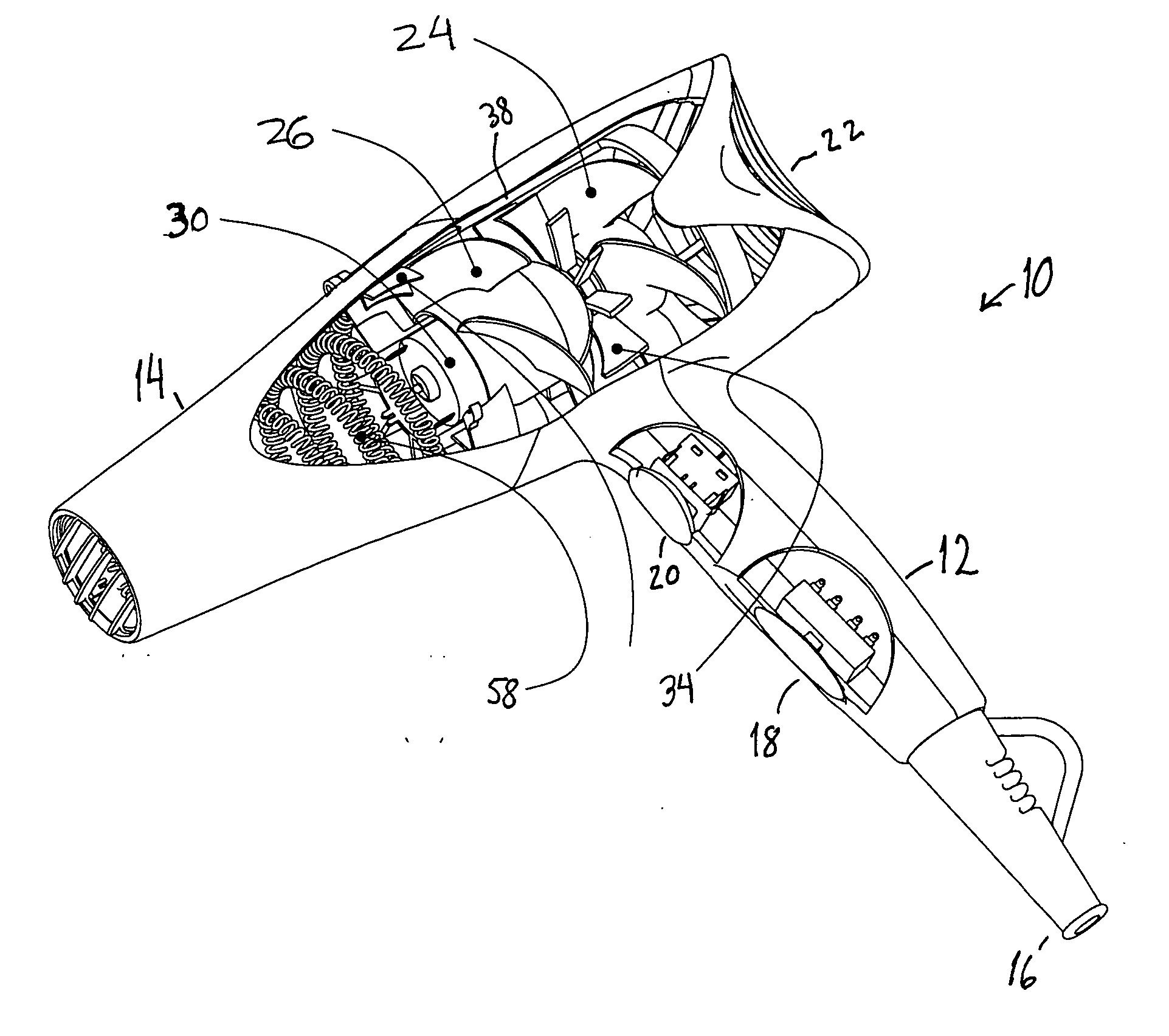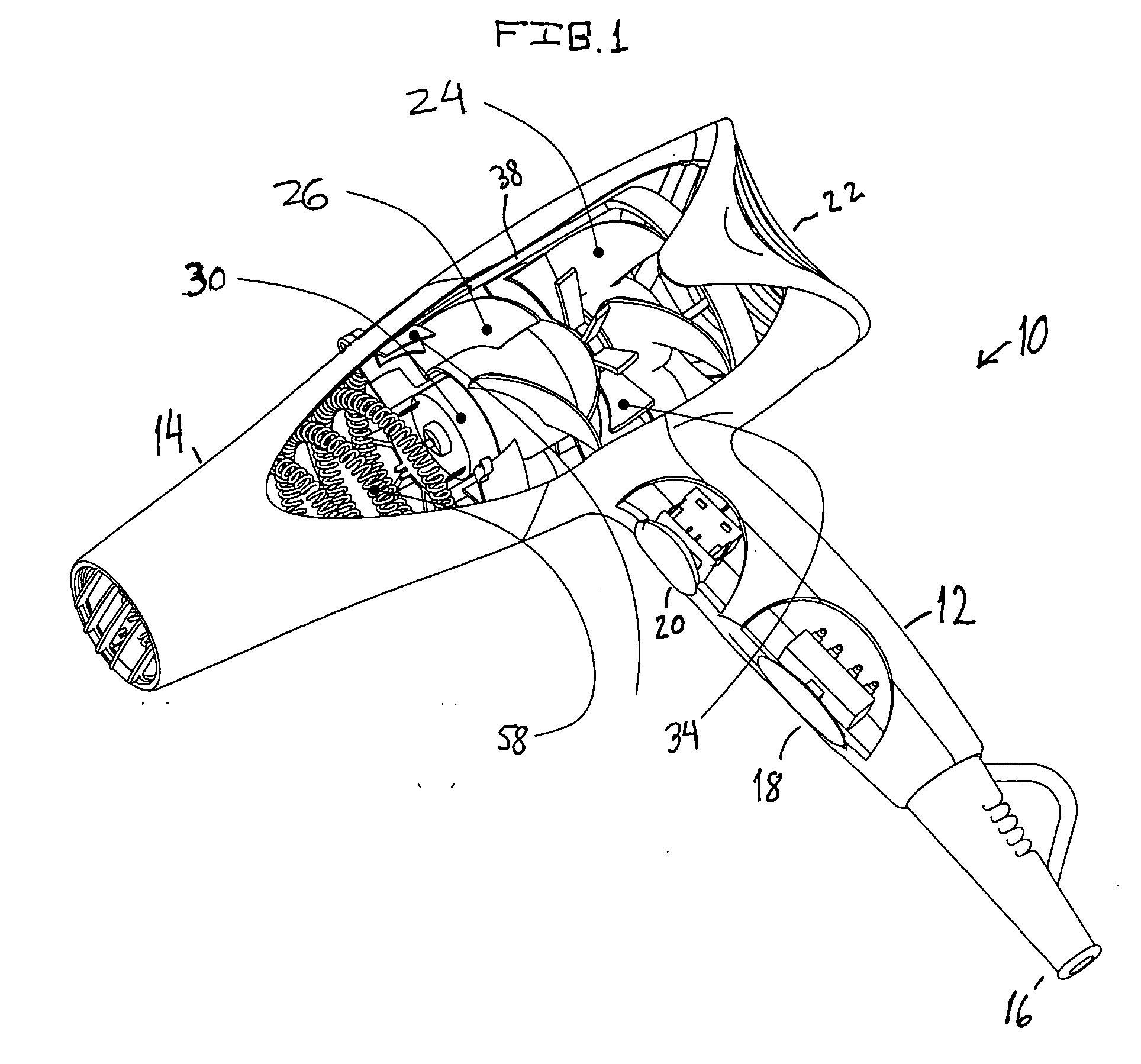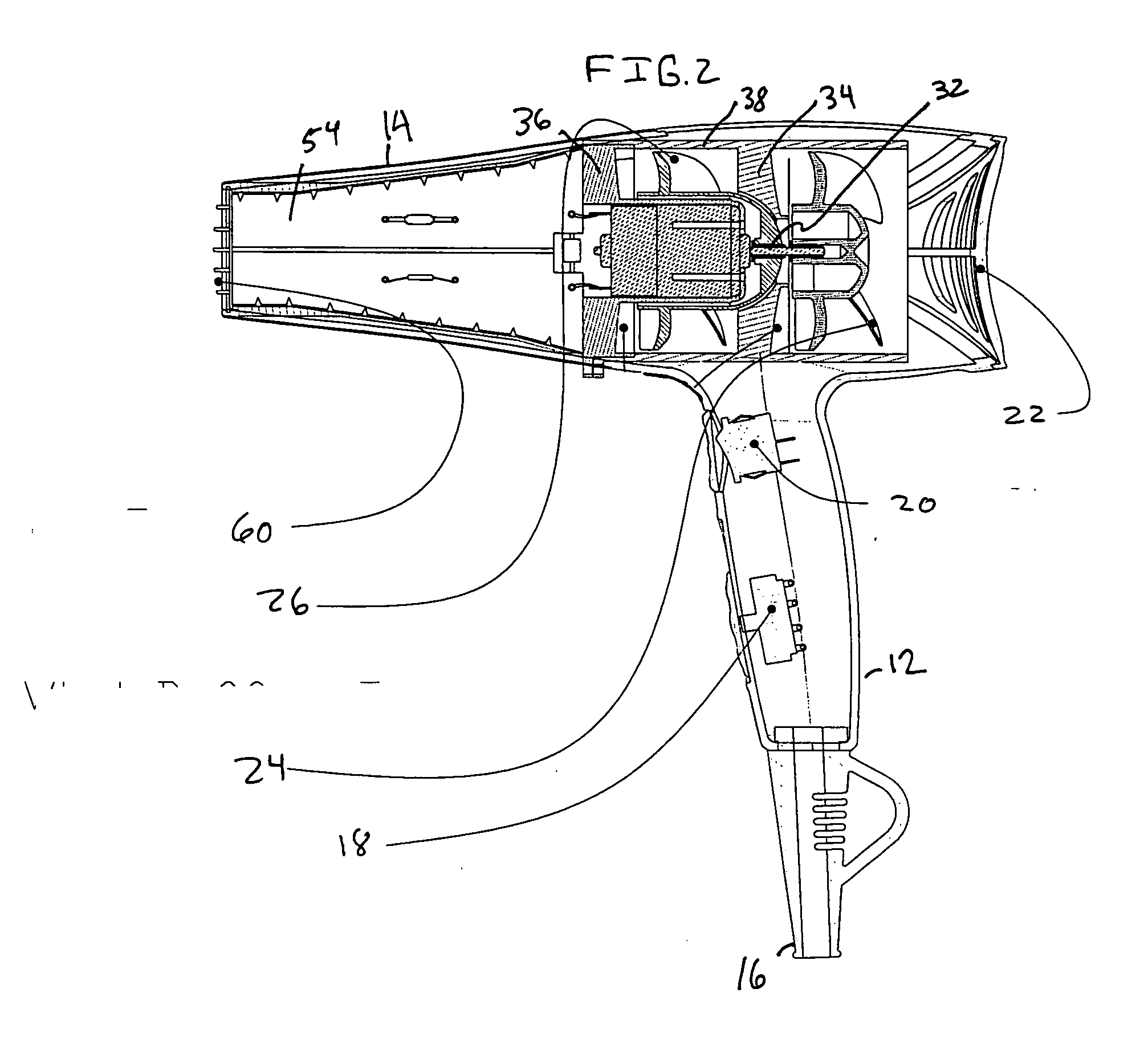Dual-fan hairdrying apparatus
a hair dryer and dual-fan technology, applied in the direction of hair dryers, lighting and heating equipment, machines/engines, etc., can solve the problems of burn injuries or discomfort, hair damage, and practical limits, and achieve the effect of smooth and efficient airflow path and increased air velocity
- Summary
- Abstract
- Description
- Claims
- Application Information
AI Technical Summary
Benefits of technology
Problems solved by technology
Method used
Image
Examples
Embodiment Construction
[0013] Referring to FIGS. 1-4, a hair drying appliance (10) comprises a housing having a handle portion (12) and a tube portion (14). The handle (12) includes a power cord (16), an on / off power switch (18), and a “cool-shot” control switch (20). An inlet portion (22) at one end of the tube portion (14) receives incoming airflow which is pulled in by a vacuum effect created by the rotation of a first fan blade (24) and a second fan blade (26), each coaxially aligned to rotate about a common axis. An electric motor (28) is housed in a generally cylindrical motor mount (30) from which a rotating shaft (32) extends for mounting and driving the first blade (24) and the second blade (26). A dome-shaped cap (35) is mounted to the shaft (32) near one end of the motor mount (30) for air-flow efficiency and to support the second fan blade (26). A first set of vanes (34) is mounted adjacent to and downstream of the first blade (24) and a second set of vanes (36) is mounted adjacent to and down...
PUM
 Login to View More
Login to View More Abstract
Description
Claims
Application Information
 Login to View More
Login to View More - R&D
- Intellectual Property
- Life Sciences
- Materials
- Tech Scout
- Unparalleled Data Quality
- Higher Quality Content
- 60% Fewer Hallucinations
Browse by: Latest US Patents, China's latest patents, Technical Efficacy Thesaurus, Application Domain, Technology Topic, Popular Technical Reports.
© 2025 PatSnap. All rights reserved.Legal|Privacy policy|Modern Slavery Act Transparency Statement|Sitemap|About US| Contact US: help@patsnap.com



